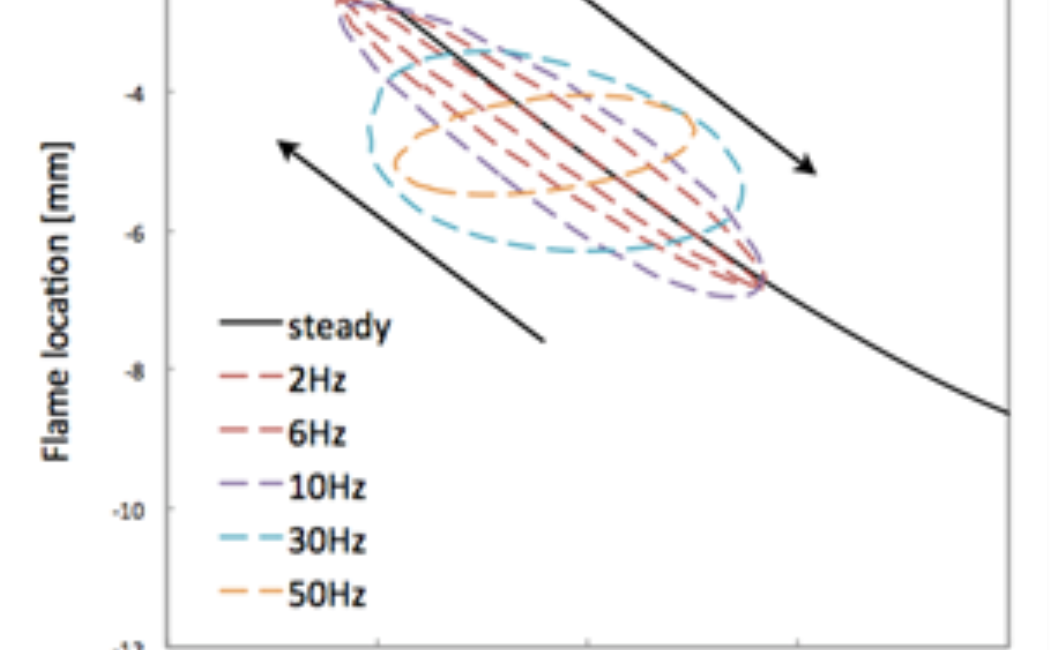


Participants
Bok Jik Lee, Wonsik Song
Motivation and Objectives
Steady and unsteady counterflow laminar flames have been extensively used to investigate fundamental flame characteristics. The information is valuable in turbulent combustion modeling in the framework of laminar flamelet approach. Although flame response to unsteady velocity fluctuations has been widely studied, the effects of unsteady composition fluctuations has not been fully explored. In collaboration with the experimental studies at Keio University, computational simulations of premixed counterflow flame are conducted with forced oscillation of equivalence ratio at the inlet. The responses of flame location and flame temperature, and flammability limit are studied.
Approach
OPUS (Im et al., 2000) is used with full GRI-3.0 reaction mechanism for methane/air mixtures. At lean/rich and cross-over conditions, computations ranging from quasi-steady to unsteady states up to tens of hertz are carried out at various amplitudes.
Highlights of Results
Flame dynamics under concentration oscillation is explained by the “back-support” mechanism. A Strouhal number based on the unsteady oscillation frequency and transport length scales is identified as the key parameter to characterize the unsteady attenuation of the flame position and temperature fluctuations.
